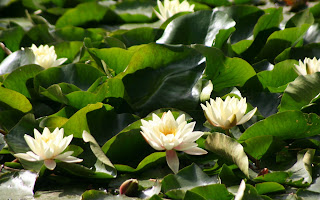7th-9th Dorchester Rain! Rain! and more Rain!. Lots of flooding made it hard to get around. Saw my first live badger trundling along the roadside and a stoat like animal trying to escape the flooding. I have taken some pictures of hedgerow flowers I need to identify later.
Honeysuckle (lonicera periclymenum)
The trumpet flower whose bugles blow scent instead of sound.
Samuel Pepys
Also called woodbine it climbs by coiling around other plants. Herbalists used its flowers for headache potions , lung disease and asthma. Folklore said if honeysuckle was brought into a house , a wedding would follow. The flowers can be added to salads or to decorate desserts. The scent is stronger in the evening and moths can smell it from quarter of a mile away.
Common Mallow (malva sylvestris)
Found on dusty roadsides and waste ground. As early as the 8th century B.C. young mallow shoots were eaten as a vegetable. The Roman Pliny said mallow sap mixed with water gave him day long protection against ache sand pains. In medieval days mallow had a reputation as an anti-aphrodisiac because it promotes clam, sober behaviour. the leaves were also used to relive wasp stings and the sap was used in poultices. The fruit has also been called "billy buttons " and "cheese flower".
Wild Angelica (angelica sylvestris)
a froth of white flowers often tinged with pink, growing in woods or beside streams. Angelica received its name as it was seen as heavenly due to its herbal properties to aid digestion. In the 17th century Nicholas Culpepper recommended it used against "all epidermal disease". He also stated it could be eaten as candy . It is still eaten like this today crystallised for cake decoration.
When we stopped at a lay by for what was a delicious bacon sandwich I spotted this beautiful orchid.
Pyramidal orchid (Anacamptis pyramidalis)
Seen on chalk downland in mid July at their best. The flower has an abundant supply of nectar for both butterflies and moths. The scent has musky overtones.
On another outing in the caravan we see lots of the usuals -pigeons, rooks and 11 thrushes in the field - the most I've ever seen in one go.
The weather all month has been either sun or heavy rain. All the usuals in the garden, great tits, blue tits, goldfinch, sparrows, blackbirds.
White water-Lily (nymphaea alba)
For poets the flower of the white water-lily was a symbol of purity of the heart. It is the largest flower in British flora. In Cheshire it is called the "lady of the lake". In Whiltshire and Dorset "swan amongst the flowers". The flowers are on stems up to 9ft long.




